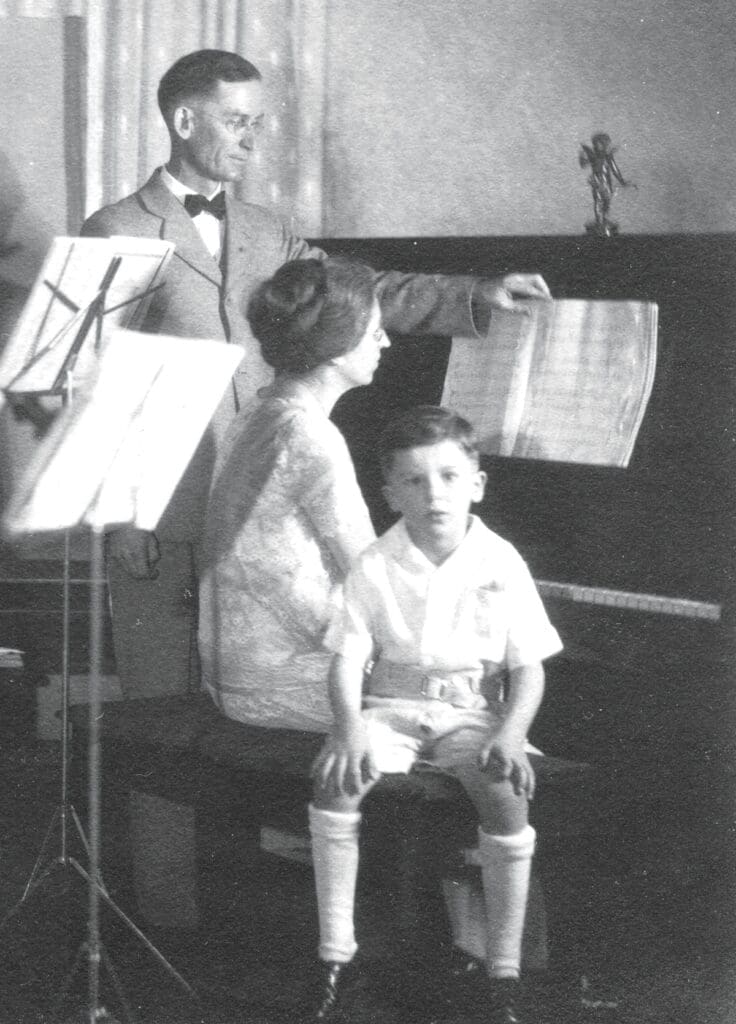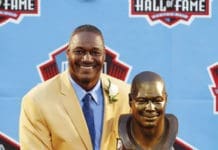By Jené McCracken
Professor McCracken was a nationally known educator whose specialty was education management and organization. He was half of a U. S. Bureau of Education team visiting black colleges to assess results of a survey. While in the Rust College President’s office, they heard the strains of a spiritual wafting through the open windows. Eager to learn more, an impromptu recital was arranged. Ruby Elzy sang nine songs including the stirring, vocally rigorous “Inflammatus et accensus.” C. C. was awestruck. The young singer, not knowing how to read music, had memorized the music by listening to records. Rust college had no music department and not even one class provided musical training.
Ohio State did.
 Within 24 hours, C. C., not having wealth of his own, relying solely upon his contacts and the promise of Ruby’s talent, offered the penniless Ruby the possibility to attend Ohio State. A month later, fellow students and friends at Rust College cobbled together enough money for Ruby’s traveling outfit and a train ticket. In 1927 Ruby Elzy traveled with a white, Rust College teacher, Ella Becker, who was going home for the summer holidays. To travel on the Pullman train together under the laws at the time, Ruby had to pose as the teacher’s maid. When boarding the train, Miss Becker said, “Now, Ruby, you give our luggage to the porter.” Ruby replied, “Yes, Miss Ella.”
Within 24 hours, C. C., not having wealth of his own, relying solely upon his contacts and the promise of Ruby’s talent, offered the penniless Ruby the possibility to attend Ohio State. A month later, fellow students and friends at Rust College cobbled together enough money for Ruby’s traveling outfit and a train ticket. In 1927 Ruby Elzy traveled with a white, Rust College teacher, Ella Becker, who was going home for the summer holidays. To travel on the Pullman train together under the laws at the time, Ruby had to pose as the teacher’s maid. When boarding the train, Miss Becker said, “Now, Ruby, you give our luggage to the porter.” Ruby replied, “Yes, Miss Ella.”
While attending Ohio State, Ruby lived with C. C. McCracken’s family, which consisted of his wife, Cleo, and their four young children. Ruby quickly became especially attached to the youngest, Ed, who she called “my little Eddie.” Cleo was a classically trained pianist. Her Uncle worked at the Baldwin piano company where he built an upright grand piano for her in 1906. Cleo cherished and played the piano for her entire life. Cleo often accompanied Ruby as she practiced singing.
C. C. arranged for auditions, arranged introductions, opened a bank account for Ruby, mentored her and became the father-figure that Ruby lacked. He maintained regular correspondence with Ruby’s mother. While at Ohio State University, Ruby wrote a play, “Stumbling Upward,” which was publicly performed. She had it copyrighted at C. C.’s suggestion. Ruby was considered “a member of the family” and participated in Sunday night Bible readings, served with Cleo’s hot chocolate and cookies.
Having arrived at OSU with just raw determination and trusting her mentor, Ruby graduated with honors. At her senior graduation recital, she was the only performer before a packed auditorium. She was respected by her peers and by the community. Emma Elzy was in attendance. Ruby was wearing a new pink gown sewn by Cleo. Ruby was welcomed back to Rust College to teach, but her mother knew her talent was so great that she “belonged to the world.” C. C. knew that, too.
Within one week of Ruby’s graduation, C.C. attended a luncheon with the endowment officer of the Rosenwald Foundation, established by the Jewish Chairman of the Board of Sears and Roebuck. C. C. wanted a scholarship for Ruby. The officer gave C. C. three minutes to make his pitch. In those three minutes, he convinced the officer. Ruby got her scholarship – to Juilliard.
Ruby moved into the YMCA near Julliard. C. C. concurrently accepted a job at Storrs, CT, to become the President of The Connecticut Agricultural College (now the University of Connecticut). Ruby took frequent train trips to her “beloved McCrackens” to spend her holidays with the family.
At Julliard, Ruby flourished as she had at OSU. She won two annual Rosenwald scholarships (normally only one is allowed) and won the prestigious Faculty Scholarship. She completed the course of study in two years instead of the expected three years. She became a part of the thriving, exciting, Harlem Renaissance community – artists who valued and honored their culture and sought unfettered expression. When her marriage failed after five years, Ruby visited the McCrackens’ home, asked if she could sit down and play Cleo’s piano. As she played, she sang, with heartbreaking feeling, “Nobody Knows the Trouble I’ve Seen.”
This is part 2 of a 3-part series. If you missed Part 1, you can read here.






























































